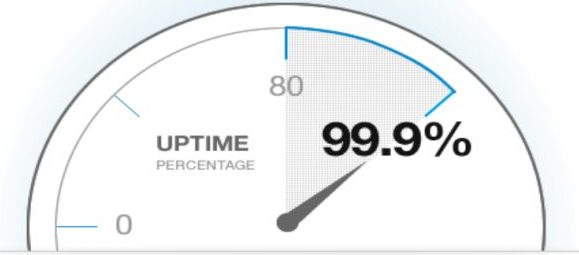If you’ve ever seen a service level agreement then you might be familiar with claims of availability percentage or uptime. Uptime is a measure of computer operating system reliability, and will usually explain the amount of time – as an example- that at least one product they are supporting will be available for.
But when your seeing 99%, 99.99% or even 99.999% – what does this actually mean in real life?
Would you be willing to bet your business on 99.99% uptime? Apparently not, because that final 0.01% can mean a lot when it comes down to the bottom line of things! Web hosting is one thing we all need for our businesses and livelihoods- but what does it take in order maintain this perfect standing with an internet service provider (ISP)?
The most important detail in any contract isn’t about how long they’ll provide services for or their price – those details are important too – no matter which web host company you choose, there’s always going to be some downtime; even if only once per year at worst case scenario. What really matters is knowing exactly what happens during that downtime.
The below table breaks down some common availability percentages, and what they actually mean to you in terms of tangible time.
| Availability % |
Downtime per year |
| 99% | 3.65 days |
| 99.9% (3 nines) | 8.76 hours |
| 99.99% (4 nines) | 52.6 minutes |
| 99.999% (5 nines) | 5.26 minutes |
If you make an agreement for 99.99%, based on the above, you could expect 52.6 minutes of downtime on your site over the course of a year.
Although it doesn’t seem like there’s much difference between 99.99% and 99.999%, in reality, it’s an extra 50 minutes or so that could have big consequences for your business.
Imagine Amazon’s website going down for 52.6 minutes compared to 5.26 – that’s millions of lost revenue hidden in 0.01%
In order to maintain a high level of uptime, it can be tempting to go for the highest number possible. However, as we discussed before with hidden downtime and exponential costs associated with this strategy; there’s always going to be trade-off between cost and time. It’s worth assessing what your business needs in terms of availability so you know how much maintenance is necessary on hardware or software systems that might not seem critical at first glance but could still have major impact when they’re unavailable.
It’s also worth mentioning that you’re only ever as strong as your weakest link. With this in mind, even if you’re paying extra for a 99% uptime server from the company with 99% internet service provider (ISP), there will still be 52 minutes of downtime each year where everything goes wrong and falls apart at once because they are all interconnected on one network.
If you want any more information on the above, or advice on how to combat downtime please contact Tech Engine Australia.




